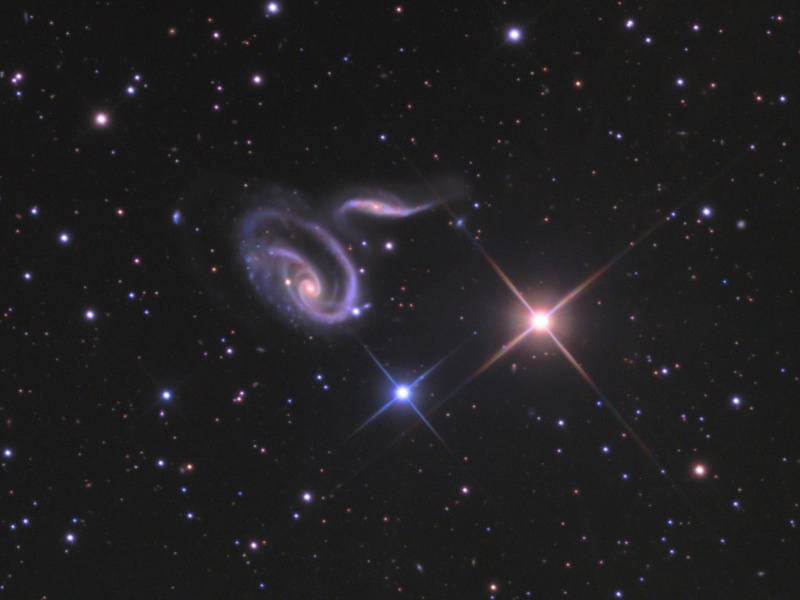This is a splendid galaxy pair. The larger galaxy displays such an intricate spiral shape that it indeed resembles a rose. That is how Arp 273 is described on Hubblesite, as a "rose" of galaxies. The smaller galaxy would be the "stem", I guess!

As usual, the resolution of the Hubble image is stunning. In the larger galaxy, it is fascinating to compare the almost perfect smoothness of the inner arms with the increasing clumpiness of the outer arms, culminating in an outer "arm" composed entirely of newborn associations of hot massive stars. But more fascinating still is the small "mini-spiral" embedded in the far right part of the bluest arm of UGC 1810, as the largest galaxy is called. Note the yellowish bar structure of the mini-spiral!

To me, the color balance of any astronomy picture is always incredibly interesting. The color balance of the finished image is highly dependent on the filters used to produce the image. If you check out this link, you'll see a link showing you what wavelengths were used to produce the Hubble picture and how the wavelengths were mapped to produce the image:
http://imgsrc.hubblesite.org/hu/db/imag ... ge_web.jpg
To summarize, the filters used were 390 nm, corresponding to ultraviolet light, mapped as blue in the image, 475 nm, mapped as green in the image, and a broadband red filter, centered at 600 nm.
How did the choice of filters affect the overall color of the finished picture? Interestingly, a NASA page that I found,
http://eosweb.larc.nasa.gov/EDDOCS/Wave ... olors.html, claims that 475 nm, which is mapped as green in the image of Arp 273, is the typical wavelength of blue light:
The visible blue light has a wavelength of about 475 nm.
So what is blue to human eyes...

...was shown as green in the Hubble picture:

By showing invisible ultraviolet light as blue and visible blue light as green, the Hubble picture of NGC 273 has been "shifted to the green and away from the blue", compared with what the human eye would see, if our eyes were sensitive enough to extremely faint light. To put it differently, the Hubble image singles out the very hot stars, the O- and B-type stars, and shows them as blue, but it merges the blue A-type stars like Vega and Sirius with more low-mass stars of spectral type F, G and K and shows the combined light of them as generally whitish or yellow-white.
Let's compare the color balance of the Hubble image with the color balance of an RGB image. This picture by Adam Block was Astronomy Picture of the Day on November 15, 2008. Note the blue color of the arms of UGC 1810 in Adam Block's image:
Adam Block's image is, I repeat, more "true" to what our eyes would see, if they were sensitive enough to very faint light. The Hubble image specifically traces the hottest stars and contrasts them with lower-mass but still moderately massive stars stars like Vega and Sirius. And of course, the Hubble picture brings out fantastic detail.
Ann
 Peculiar Galaxies of Arp 273
Peculiar Galaxies of Arp 273

